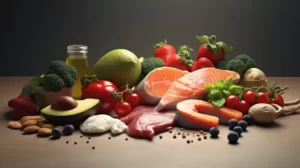High blood pressure, also known as hypertension, is no longer only a concern for adults. The risk has now extended to a younger, unexpected group – children and adolescents. Over a 13-year period, a notable 27% increase in the occurrence of hypertension in children and adolescents has been observed. Researchers believe this upward trend could be attributed to factors such as obesity, larger waistlines, and consuming a diet high in sodium from junk food.
The danger of high blood pressure is that it often goes unnoticed, as many are unaware they suffer from hypertension. According to Bernard Rosner, Ph.D., the lead author of the study, it is crucial that blood pressure is checked regularly to ensure it remains under control.
The repercussions of uncontrolled hypertension are severe, leading to stroke, heart disease, kidney failure, and even death. With almost 1,000 hypertension-related fatalities occurring daily in the United States, this is now a risk that children and adolescents face as well.
The findings of the study
The researchers analyzed more than 3,200 children aged 8-17 in the National Health and Nutrition Examination Survey (NHANES) III conducted between 1988-1994 and compared it to over 8,300 children in the NHANES conducted between 1999-2008. The study unearthed several significant findings:
- Boys have higher chances of elevated blood pressure, although girls are closing the gap: The study showed that boys were more likely to have hypertension. Nevertheless, the rate of increase for girls is also alarming.
-
Increasing cases of overweight children with bigger waistlines: Obesity is a significant risk factor when it comes to hypertension. The study demonstrated that a growing number of children are becoming overweight.
-
Higher blood pressure found in children at the top measurement percentiles: Children whose body mass or waistline measurements were in the top 25 percent for their age group were about twice as likely to suffer from hypertension as children with measurements in the bottom 25 percent.
-
African-American children at a greater risk: The study uncovered a 28 percent higher risk of elevated blood pressure in African-American children compared to non-Hispanic white children.
-
High sodium intake leads to higher blood pressure: Children with the highest sodium intake were found to be 36 percent more likely to have hypertension than those children with the lowest intake.
What can be done to mitigate the risk of hypertension in children?
- Focus on a healthy, balanced diet: Encourage children to consume wholesome, home-cooked meals instead of processed food with high sodium content. Incorporate fresh fruits, vegetables, lean protein, and whole grains into their daily meals.
-
Monitor portion sizes: Overeating can become a major contributor to high blood pressure. Teach children the importance of mindful eating and prioritize listening to their body’s signals about fullness.
-
Get active: Encouraging children to engage in regular physical activities can help them maintain their weight within a healthy range and reduce the risk of high blood pressure. Aim for a minimum of 30 minutes of exercise per day.
-
Limit screen time: Staying glued to gadgets and screens for extended periods can lead to a sedentary lifestyle. Limit screen time and promote outdoor activities for a healthier lifestyle.
-
Educate about the impact of unhealthy habits: Ensure your children understand the potential long-term consequences of hypertension on their overall health, and help them make informed choices about their lifestyle.
Recognizing the rising risk of hypertension among children and adolescents is the first step in addressing the issue at hand. Parents, educators, and healthcare providers must join forces to teach children the value of healthy lifestyle choices while regularly monitoring their blood pressure to prevent the associated complications. Proactive steps taken today will go a long way in safeguarding our children’s health and ensuring a happier, healthier future for the generations to come.



